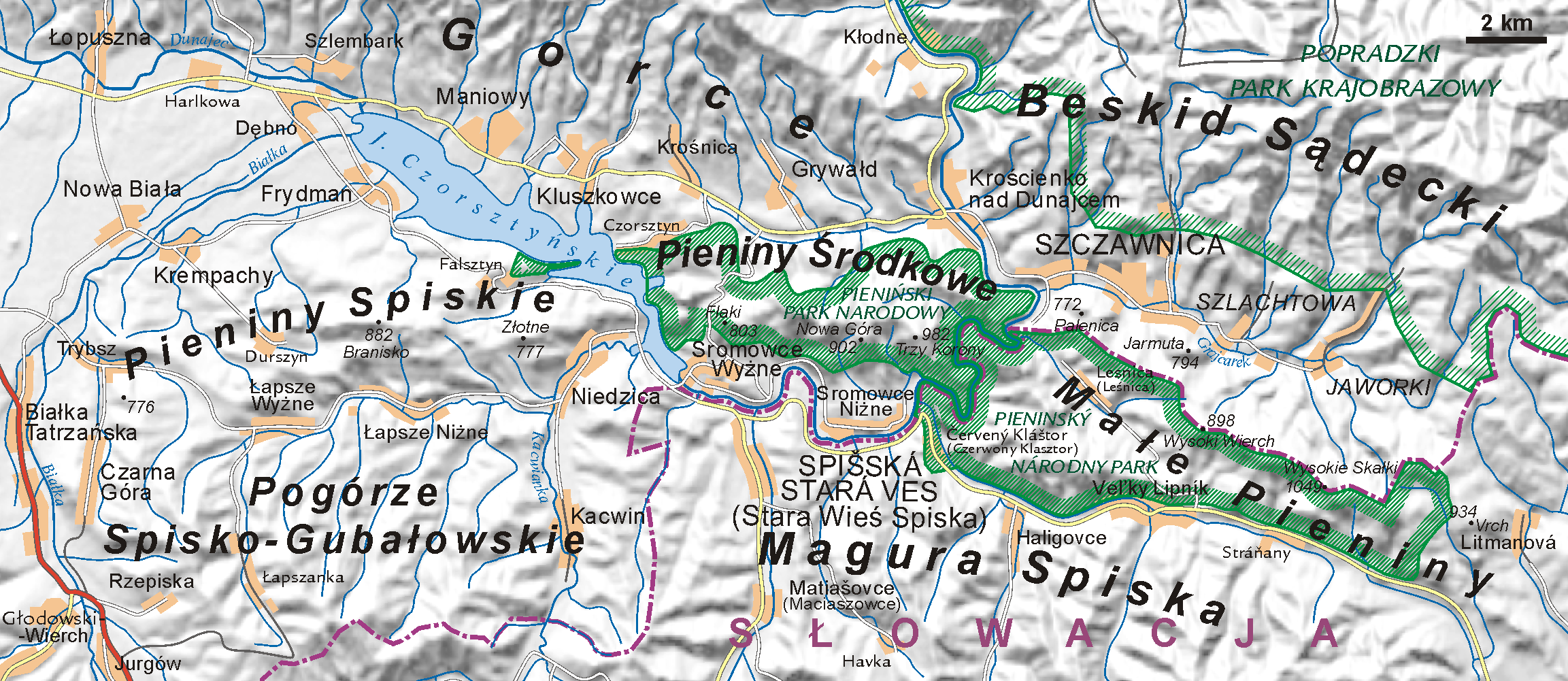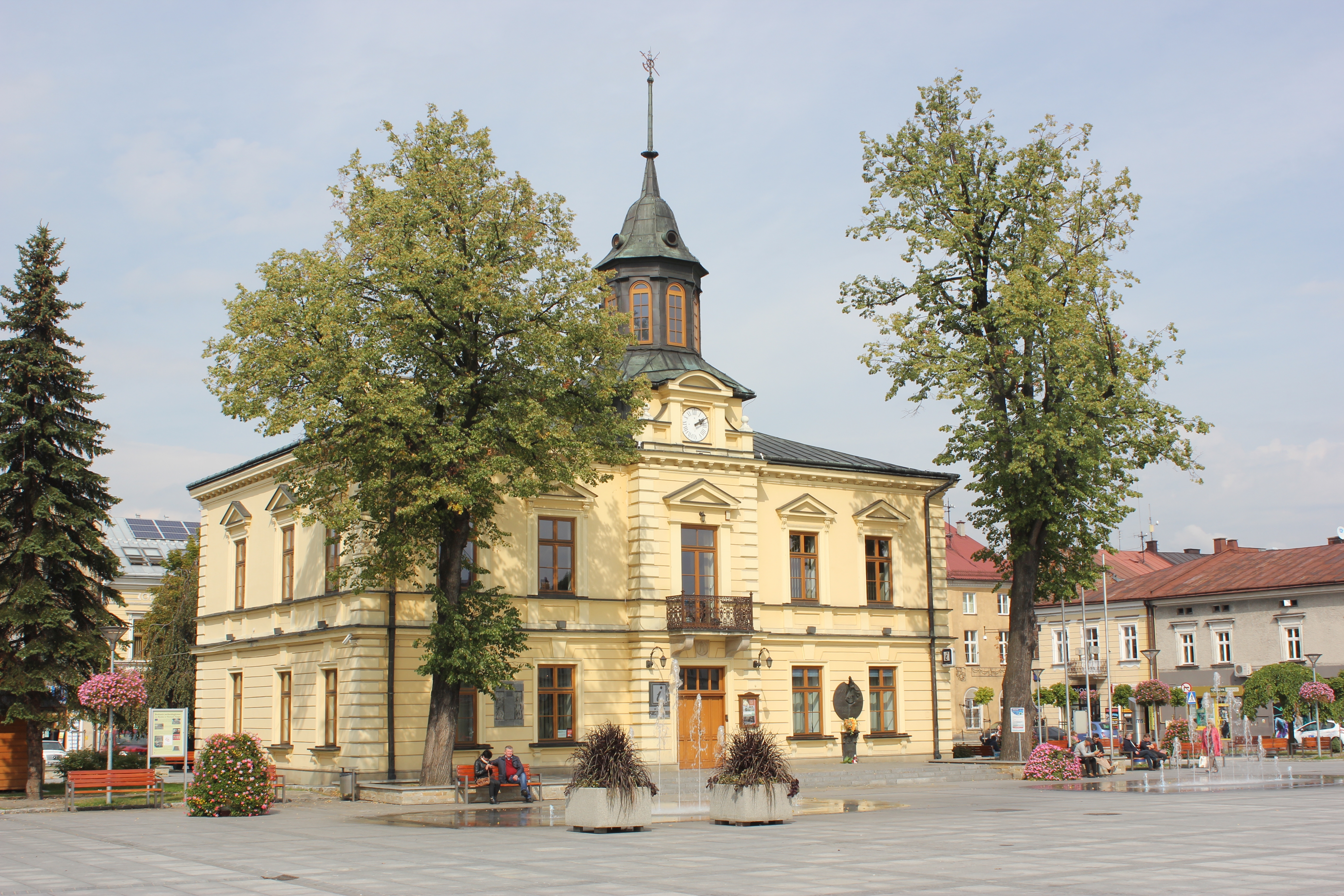|
Łopuszna
Łopuszna is a village in the administrative district of Gmina Nowy Targ, within Nowy Targ County, Lesser Poland Voivodeship, in southern Poland. It lies approximately east of Nowy Targ and south of the regional capital Kraków. The village, with a population of about 1,300 lies on the Dunajec river, at the foot of the Gorce Mountains. Łopuszna is the location of the ''Dwór (manor house), Dwór Tetmajerów'' manor house built around 1790 ''(pictured)''; which serves as branch of the Tatra Mountains, Tatra Muzeum in Zakopane since 1978. References Villages in Nowy Targ County {{NowyTarg-geo-stub ... [...More Info...] [...Related Items...] OR: [Wikipedia] [Google] [Baidu] |
Gorce Mountains
The Gorce Mountains (, ) are part of the Western Beskids mountain range spreading across southernmost Poland. They are situated in Małopolska Province, at the western tip of the long Carpathian range extending east beyond the Dunajec River for some . The Gorce are characterized by numerous ridges reaching in all directions for up to with a series of higher elevations cut by deep river valleys. The range is dominated by about a dozen gentle peaks including Turbacz (the highest, at above sea level) in the centre, and – facing east: Jaworzyna Kamienicka (), Kiczora (), Kudłoń (), Przysłop, Czoło and Gorc Kamienicki. The south-eastern ridge of the Gorce reaches the Pieniny range (cut off by the Ochotnica pass), with Lubań () as its tallest peak followed by Pasterski Wierch, Runek and Marszałek. The north-west ridges include Obidowiec, and the peak of Suhora (1,000 m (3,300 ft)) featuring an astronomical observatory owned and operated by the Pedagogical Unive ... [...More Info...] [...Related Items...] OR: [Wikipedia] [Google] [Baidu] |
Dwór (manor House)
A manor house of Polish- Lithuanian nobility is called dwór or dworek in Polish and dvaras in Lithuanian. The architectural form of the manor house evolved around the late Polish Renaissance period and continued until the Second World War, which, together with the communist takeover of Poland and Soviet occupation of Lithuania, spelled the end of the nobility in both nations. A 1944 decree nationalized most mansions as property of the nobility; few were adapted to other purposes and many slowly fell into ruin. A vast majority of such mansions remain unused and are slowly deteriorating. Architectural history Noble manors in Poland were typically small to medium-sized residencies for the landed gentry. According to estimates, in the 16th century, Greater Poland alone had several hundred to a thousand middle szlachta manors, while the entire Crown of the Kingdom of Poland had at least a dozen thousand. During the times of the Polish–Lithuanian Commonwealth, Polish-L ... [...More Info...] [...Related Items...] OR: [Wikipedia] [Google] [Baidu] |
Gmina Nowy Targ
__NOTOC__ Gmina Nowy Targ is a rural gmina (administrative district) in Nowy Targ County, Lesser Poland Voivodeship, in southern Poland. Its seat is the town of Nowy Targ, although the town itself is not part of the territory of the gmina. The gmina covers an area of , and as of 2006 its total population is 22,070. Villages Gmina Nowy Targ contains the villages and settlements of Dębno, Długopole, Dursztyn, Gronków, Harklowa, Klikuszowa, Knurów, Krauszów, Krempachy, Lasek, Łopuszna, Ludźmierz, Morawczyna, Nowa Biała, Obidowa, Ostrowsko, Pyzówka, Rogoźnik, Szlembark, Trute and Waksmund. Neighbouring gminas Gmina Nowy Targ is bordered by the town of Nowy Targ and by the gminas of Bukowina Tatrzańska, Czarny Dunajec, Czorsztyn, Kamienica, Łapsze Niżne, Niedźwiedź, Ochotnica Dolna, Raba Wyżna, Rabka-Zdrój and Szaflary. ReferencesPolish official population figures 2006 {{Nowy Targ County Nowy Targ Nowy Targ (Officially: ''Royal Free ci ... [...More Info...] [...Related Items...] OR: [Wikipedia] [Google] [Baidu] |
Kraków
, officially the Royal Capital City of Kraków, is the List of cities and towns in Poland, second-largest and one of the oldest cities in Poland. Situated on the Vistula River in Lesser Poland Voivodeship, the city has a population of 804,237 (2023), with approximately 8 million additional people living within a radius. Kraków was the official capital of Poland until 1596, and has traditionally been one of the leading centres of Polish academic, cultural, and artistic life. Cited as one of Europe's most beautiful cities, its Kraków Old Town, Old Town was declared a UNESCO World Heritage Site in 1978, one of the world's first sites granted the status. The city began as a Hamlet (place), hamlet on Wawel Hill and was a busy trading centre of Central Europe in 985. In 1038, it became the seat of King of Poland, Polish monarchs from the Piast dynasty, and subsequently served as the centre of administration under Jagiellonian dynasty, Jagiellonian kings and of the Polish–Lithuan ... [...More Info...] [...Related Items...] OR: [Wikipedia] [Google] [Baidu] |
Zakopane
Zakopane (Gorals#Language, Podhale Goral: ''Zokopane'') is a town in the south of Poland, in the southern part of the Podhale region at the foot of the Tatra Mountains. From 1975 to 1998, it was part of Nowy Sącz Voivodeship; since 1999, it has been part of Lesser Poland Voivodeship. its population was 27,266. Zakopane is a centre of Gorals, Goral culture and is often referred to as "the winter capital of Poland". It is a popular destination for mountaineering, skiing, and tourism. Zakopane lies near Poland's border with Slovakia, in a valley between the Tatra Mountains and Gubałówka Hill. It is connected by rail and road to the provincial capital, Kraków. Zakopane lies above mean sea level, above sea level and centres on the intersection of its Krupówki and Kościuszko Streets. History The earliest documents mentioning Zakopane date to the 17th century, describing a Glade (geography), glade called ''Zakopisko''. In 1676, it was a village of 43 inhabitants. In 1818, Za ... [...More Info...] [...Related Items...] OR: [Wikipedia] [Google] [Baidu] |
Manor House
A manor house was historically the main residence of the lord of the manor. The house formed the administrative centre of a manor in the European feudal system; within its great hall were usually held the lord's manorial courts, communal meals with manorial tenants and great banquets. The term is today loosely (though erroneously) applied to various English country houses, mostly at the smaller end of the spectrum, sometimes dating from the Late Middle Ages, which currently or formerly house the landed gentry. Manor houses were sometimes fortified, albeit not as fortified as castles, but this was often more for show than for defence. They existed in most European countries where feudalism was present. Function The lord of the manor may have held several properties within a county or, for example in the case of a feudal baron, spread across a kingdom, which he occupied only on occasional visits. Even so, the business of the manor was directed and controlled by regular mano ... [...More Info...] [...Related Items...] OR: [Wikipedia] [Google] [Baidu] |
Dunajec
The Dunajec (; Goral dialects: ''Dónajec''; ) is a river running through northeastern Slovakia and southern Poland. It is also regarded as the main river of the Goral Lands. It is a right tributary of the Vistula River. It begins in Nowy Targ at the junction of two short mountain rivers, Czarny Dunajec and Biały Dunajec (Black and White Dunajec). Dunajec forms the border between Poland and Slovakia for in the Pieniny Środkowe (Slovak: Centrálne Pieniny) range, east of the Czorsztyn reservoir. Geography The Dunajec is long, including its source river Czarny Dunajec,Statistical Yearbook of the Republic of Poland 2017 [...More Info...] [...Related Items...] OR: [Wikipedia] [Google] [Baidu] |
Village
A village is a human settlement or community, larger than a hamlet but smaller than a town with a population typically ranging from a few hundred to a few thousand. Although villages are often located in rural areas, the term urban village is also applied to certain urban neighborhoods. Villages are normally permanent, with fixed dwellings; however, transient villages can occur. Further, the dwellings of a village are fairly close to one another, not scattered broadly over the landscape, as a dispersed settlement. In the past, villages were a usual form of community for societies that practice subsistence agriculture and also for some non-agricultural societies. In Great Britain, a hamlet earned the right to be called a village when it built a church.-4; we might wonder whether there's a point at which it's appropriate to talk of the beginnings of French, that is, when it wa ... ''village'', from Latin ''villāticus'', ultimately from Latin ''villa'' (English ''vi ... [...More Info...] [...Related Items...] OR: [Wikipedia] [Google] [Baidu] |
Nowy Targ
Nowy Targ (Officially: ''Royal Free city of Nowy Targ'', Yiddish: ''Naymark'', Gorals, Goral dialect: ''Nowy Torg'' ) is a town in southern Poland, in the Lesser Poland Voivodeship. It is located in the Orava-Nowy Targ Basin at the foot of the Gorce Mountains, at the confluence of the Czarny Dunajec (river), Czarny Dunajec and the Biały Dunajec (river), Biały Dunajec. It is the seat of the Nowy Targ County and the rural Gmina Nowy Targ, as well as the Tatra Euroregion. With 33,293 inhabitants, Nowy Targ is the largest town and the historic capital of Podhale, as well as its main commercial, communication and industrial center. The town has the Podhale State Vocational University in Nowy Targ, Podhale State Vocational University and the Nowy Targ Airport, highest located airport in Poland. Established before 1233, Nowy Targ received city rights on 22 June 1346 from King Casimir III the Great, Casimir the Great. The historic architectural and urban complex of the town with a Mar ... [...More Info...] [...Related Items...] OR: [Wikipedia] [Google] [Baidu] |
List Of Sovereign States
The following is a list providing an overview of sovereign states around the world with information on their status and recognition of their sovereignty. The 205 listed states can be divided into three categories based on membership within the United Nations System: 193 member states of the United Nations, UN member states, two United Nations General Assembly observers#Current non-member observers, UN General Assembly non-member observer states, and ten other states. The ''sovereignty dispute'' column indicates states having undisputed sovereignty (188 states, of which there are 187 UN member states and one UN General Assembly non-member observer state), states having disputed sovereignty (15 states, of which there are six UN member states, one UN General Assembly non-member observer state, and eight de facto states), and states having a political status of the Cook Islands and Niue, special political status (two states, both in associated state, free association with New ... [...More Info...] [...Related Items...] OR: [Wikipedia] [Google] [Baidu] |
Gmina
The gmina (Polish: , plural ''gminy'' ) is the basic unit of the administrative division of Poland, similar to a municipality. , there were 2,479 gminy throughout the country, encompassing over 43,000 villages. 940 gminy include cities and towns, with 322 among them constituting an independent urban gmina () consisting solely of a standalone town or one of the 107 cities, the latter governed by a city mayor (''prezydent miasta''). The gmina has been the basic unit of territorial division in Poland since 1974, when it replaced the smaller gromada (cluster). Three or more gminy make up a higher level unit called a powiat, except for those holding the status of a city with powiat rights. Each and every powiat has the seat in a city or town, in the latter case either an urban gmina or a part of an urban-rural one. Types There are three types of gmina: #302 urban gmina () constituted either by a standalone town or one of the 107 cities, the latter governed by a city mayor (prezyd ... [...More Info...] [...Related Items...] OR: [Wikipedia] [Google] [Baidu] |







